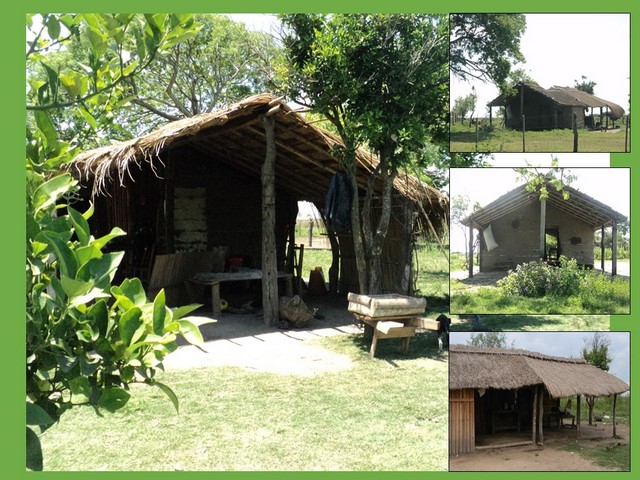Traditional housing in the Iberá region from an ethnobotanical approach: contributions to biocultural conservation
DOI:
https://doi.org/10.30972/bon.3226739Keywords:
Cultural landscapes, settlement, traditional botanical knowledge, traditional ecological knowledgeAbstract
In the Iberá region there are dwellings that are self-built with plants found in the surrounding area, and that are designed according to the lifestyles of their inhabitants, and in full reciprocity with the environment. In this context, we studied the Iberá dwellings using an ethnobotanical approach and within the framework of biocultural conservation. To this end, we inquired about the location, composition, construction, and design, among other aspects, as well as the future prospectives and implications of this construction at the study site. The methodology combined ethnographic and ethnobotanical techniques. Thirty-four dwellings were visited, involving a total of 68 people. Sketches were made, and plant specimens were collected. The results showed that the Iberá dwelling is characterised as a simple construction, composed mainly of plants belonging to the environment, and with the simple functions of storage and overnight accommodation. Nevertheless, the entire housing is to be highlighted as a biocultural conservation unit for the Iberá region, as it is placed in a specific point in the settlement where the community is located, which includes the actual building of the house, the surrounding agroforestry system and the associated knowledge.Downloads
Download data is not yet available.

Downloads
Published
2023-07-05
How to Cite
Pirondo, A., Rojas, L., & Keller, H. A. (2023). Traditional housing in the Iberá region from an ethnobotanical approach: contributions to biocultural conservation. Bonplandia, 32(2), 133–146. https://doi.org/10.30972/bon.3226739
Issue
Section
Original papers
License
Declaration of Adhesion to Open Access
- All contents of Bonplandia journal are available online, open to all and for free, before they are printed.
Copyright Notice
- Bonplandia magazine allows authors to retain their copyright without restrictions.
- The journal is under a Creative Commons Attribution 4.0 International license.














.jpg)


